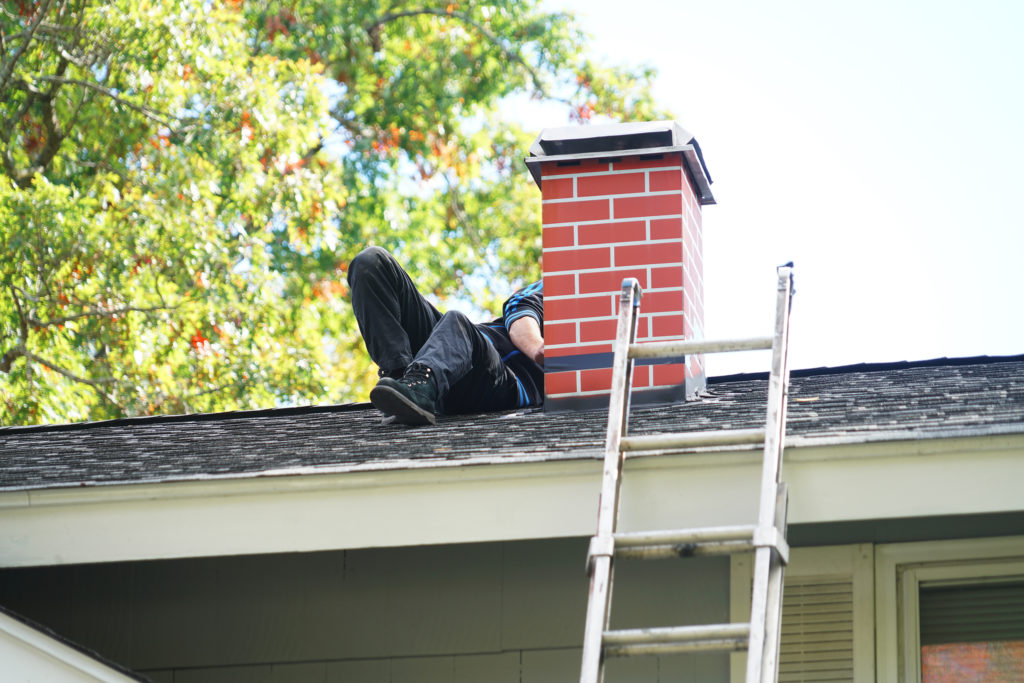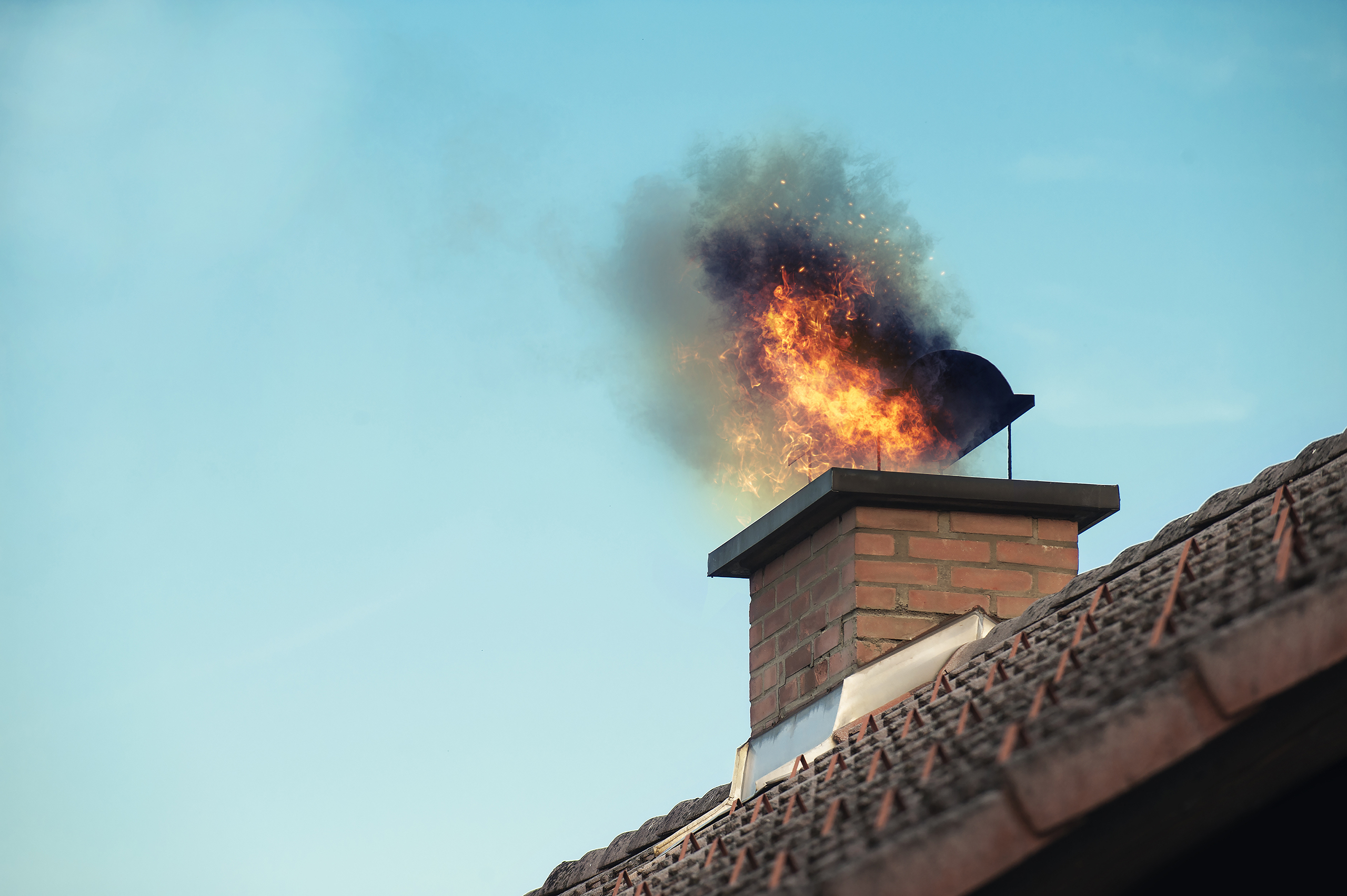We’re getting to that time of the year when you come home and get cozy by the fireplace. However, most homeowners don’t realize that chimney maintenance is key to safely enjoying warm nights at home.
Chimneys are made up of various specific parts that all need to be in good condition to function safely and efficiently. This means that having a basic understanding of the anatomy of your chimney plays a vital role in helping you determine when something needs to be repaired or replaced.
Here is an overview of the anatomy of a chimney, how problems with specific parts can impact its overall functionality, and why choosing our experts is an essential step in keeping your chimney in peak condition!
Why Knowing Your Chimney’s Anatomy Matters
Understanding how your chimney should look and function can make it significantly easier to tell when something is not quite right, which can substantially improve the safety of your home and make your chimney last as long as possible.
Safety Concerns
One of the primary functions of your chimney is to improve the safety of your home by providing an easy way for smoke and fumes to escape and keep fires in your fireplace contained. Chimneys that become blocked or damaged can quickly become a serious safety hazard because they can trap dangerous gases in your home or allow flames to spread.
Efficient Functioning
A chimney that is not functioning effectively may not always be an immediate safety hazard. Still, you may start to notice minor issues with the freshness of the air in your home that worsen over time. Chimneys forced to work harder than they should are likely to wear out faster than they need to.
Longevity of the Chimney
Not having a thorough understanding of how the parts of your chimney are supposed to look and function can make you less likely to notice when something is damaged, worn, or just not working as efficiently as it should, which means that you will not be able to have your chimney repaired as soon as something goes wrong. Having problems fixed as quickly as possible is vital when it comes to making sure your chimney lasts as long as possible, which means that taking the initiative to learn how to spot signs that your chimney needs to be repaired is a must when it comes to prolonging its life.
Basic Anatomy of a Chimney
Understanding the specific parts of your chimney is an essential step in identifying potential problems. The exact makeup of your chimney can vary depending on its type, age, and other factors. Several parts form the backbone of nearly any chimney. Here are some of the most important elements of the anatomy of your chimney to be aware of!
The Flue
Your chimney’s flue is the main open space inside it that smoke travels through to get out of your home. Most flues include a flue liner to protect the interior of the chimney, which can be made from various heat-resistant materials. Some of the materials flue liners can be made from include:
- Aluminum
- Stainless steel
- Terracotta
- Clay
- Ceramic
The Firebox
Any chimney that includes a fireplace needs a heat-resistant enclosure to ensure that its flames do not damage the interior of your chimney or the rest of your home. Fireboxes typically consist of bricks that line the interior walls of your fireplace that are directly next to the flames to keep them contained and prevent heat from spreading.
The Smoke Chamber
Your chimney’s smoke chamber encompasses the space between its firebox and flue liner. Its smoke shelf helps to keep rain, downdrafts, and other debris from coming further into your home than the flue.
The Crown and Cap
A chimney cap covers the opening of your chimney to prevent animals and large debris from entering your home. While this cap provides plenty of space for smoke and small debris to filter through, it prevents anything large enough to have a high level of potential to:
- Damage your chimney,
- Cause a fire,
- Or otherwise, be problematic from getting through.
Your crown is the next highest part of the chimney’s exterior, and this flat cover is an even more protective layer that keeps rain, snow, and other weather concerns from damaging your chimney. It is common for crowns to become damaged and even break frequently, but replacing them is much easier and cheaper than repairing a chimney itself.
Common Chimney Problems and Their Anatomy
Understanding the types of issues your chimney is most likely to experience, and the parts they typically impact is critical when identifying and solving problems as early as possible. Here are some of the most common chimney problems you may experience!
Creosote Buildup
Creosote is a type of oil that comes from coal tar, and it is found in combustion fumes when firewood is burned. It is considered a probable carcinogen, so keeping its levels as low as possible is a must.
Blockages
A blocked chimney may cause an unsafe amount of smoke and fumes to build up inside your chimney and eventually reenter your home instead of leaving through the top as they are supposed to. Excess smoke trapped inside your flue and smoke chamber can significantly impact the air quality in your home and lead to breathing problems or more severe health concerns.
Structural Issues
While sufficient protective measures should go a long way toward protecting the structure of your chimney, bricks, and other materials can crumble over time. These problems can usually be repaired before they cause significant structural issues. Addressing them once they are severe may mean that your chimney needs to be completely replaced to keep it from collapsing—impacting nearby parts of your home or injuring someone with falling debris.
Maintenance Requirements for Each Part
Here are some of the most important things to know about maintaining your chimney!
Regular Cleaning
Having your chimney cleaned regularly is a must when removing excessive debris from your flue, firebox, smoke chamber, crown, cap, and other parts of your chimney.
Inspections
No matter how much you know about how each part of your chimney is supposed to look and function, you are probably not an expert in the in-depth details of what goes into creating a perfectly functioning chimney. Having an expert inspect your chimney regularly can ensure that even the tiniest signs are found as early as possible to schedule cleaning and repairs.
Repairs and Replacements
Making repairs as soon as you notice them through regular maintenance is an important step in making your chimney and its parts last as long as possible. Still, specific parts may also need to be replaced occasionally to maintain your chimney’s overall functionality and integrity.
Why Professional Maintenance Is Essential
While you may be able to manage minor ongoing maintenance on your own, most significant issues are best handled by a professional chimney sweep.
Expertise and Experience
Professional chimney cleaners have a high level of expertise in handling every aspect of chimney cleaning and repairs. Choosing a highly qualified professional with several years of experience maintaining the specific types of chimneys that are the most common in your area is a critical step in ensuring that yours receives the best care possible.
Safety Measures
While it can be tempting to attempt to clean your chimney yourself to save money, there are more safe options. Trying to DIY your chimney cleaning can result in falls, smoke or fume inhalation, and other safety issues that professionals are better equipped to manage.
Comprehensive Services
Professional chimney cleaners often offer comprehensive packages that allow you to bundle several services into one visit at lower prices to make maintaining your chimney regularly more convenient and less expensive. With these options, you can select a standard package of services your cleaner put together or build your own that includes tailored services to your particular chimney model.
Choosing a professional can also allow you to take advantage of outsourcing the more difficult or dangerous services that you cannot reasonably do on your own.
Choose SootServ for Quality Chimney Maintenance
At SootServ, our Baton Rouge chimney sweeps are here to help you keep your chimney as safe and functional as possible. Your understanding of how your chimney should look, and function allows you to alert us to issues that need to be addressed as early as possible.
We are here to repair or replace any parts that are not working at the highest level. Contact us today to learn more about the services we offer or to schedule a cleaning!



